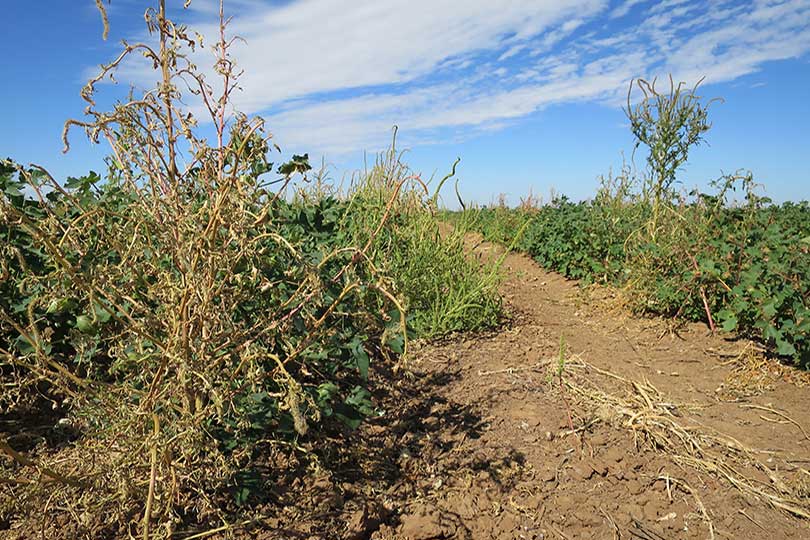Texas currently lists seven weeds as resistant to one herbicide or another, according to Southwest Farm Press. But farmers will have new options this year to help control them.
“Weed resistance is real and a problem across Texas, the country and the world,” Pete Dotray, professor of weed science at Texas Tech University and a Texas AgriLife Extension specialist, told Southwest Farm Press.
Weed resistance happens through biological changes in the resistant plant which include:
- An altered site of action
- Changes in metabolism
- Enhanced expression of site of action
- Reduced uptake of the herbicide
- Reduced translocation
- Compartmentalization
One of the biggest problems for glyphosate (Roundup)-tolerant crops and West Texas cotton farmers is palmer amaranth (pigweed).
“Palmer amaranth resistance showed up in 2011, and we are concerned over other weeds with potential for resistance,” Dotray said.
More was found in 2012 and over the next few years. Palmer believes almost every cotton field in West Texas has a resistant weed population.
But with the approval of new technology and new herbicide combinations that are effective against glyphosate-resistant pigweed, farmers will have new tools to fight the pest.
XtendFlex and Enlist will offer significant opportunities for controlling pigweed with new formulations of dicamba and 2,4-D on cotton plants tolerant of those chemistries.
Dotray urges farmers to use caution when using dicamba and 2,4-D. Overreliance on them could lead to resistance.
“If you overuse dicamba or 2,4-D technology, we will not have them available for very long,” Dotray said.
He noted that following best management practices may result in weed-free cotton, even in fields with significant resistant weed population.
Fields that result in weed-free cotton started clean using DNA herbicide and pre-emergence materials chosen for the weeds present in the field. Timely post-emergence applications, thorough coverage, and multiple modes of action for different crops in adjacent fields can help provide good weed management practices.
Dotray emphasized the activation of the applied herbicides and targeting small weeds for post-emergency applications.
To prevent weeds from reemerging and producing seeds that add to the resistant population for the following season, control is critical.
“We are learning more about the biology of the weed—seed production, for instance,” Dotray said. “Pigweed seed numbers may be as high as 600,000 per plant. Even late emerging weeds can produce seed quickly.”
Seed viability studies can determine how many months the palmer amaranth seed will persist and how long a farmer would need to follow an intense weed management program to effectively reduce the resistant weed population.
New products, including Brake herbicide and Inzen, available for sorghum, will help manage resistant weeds in a rotation crop.
“These options provide more opportunities to control resistant weeds, using products in a new way,” Dotray said. “They increase the availability of different modes of action.”
A new Texas AgriLife/Texas Plant Protection Association program and mobile app, Flag Technology, offers a useful tool for identifying off-target sites and preventing application errors.

